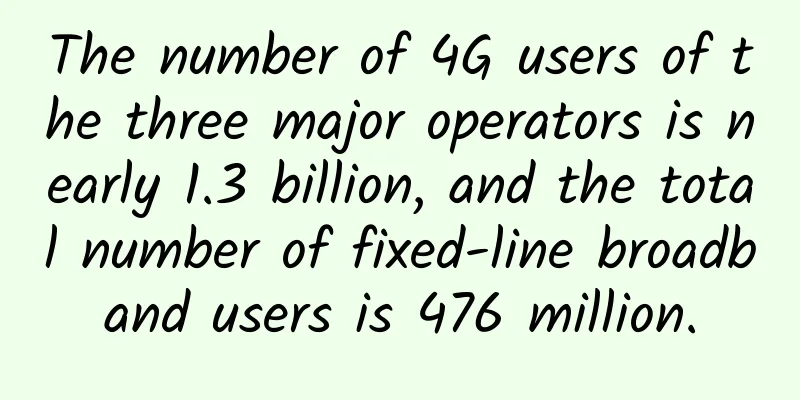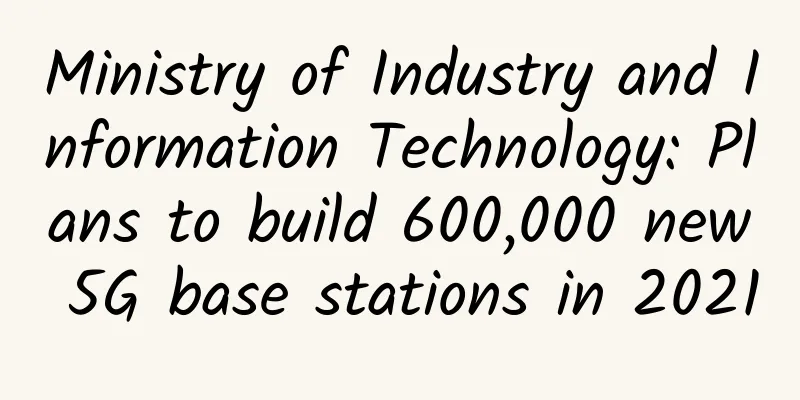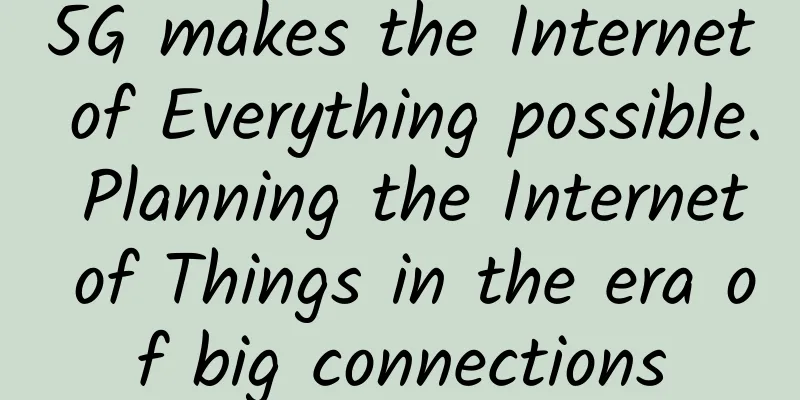The number of 4G users of the three major operators is nearly 1.3 billion, and the total number of fixed-line broadband users is 476 million.

|
Data released by the Ministry of Industry and Information Technology showed that as of the end of September, the total number of mobile phone users of the three basic telecommunications companies reached 1.6 billion, a year-on-year increase of 0.1%. Among them, the number of 4G users was 1.293 billion, a year-on-year increase of 2.3%, accounting for 80.8% of the total number of mobile phone users, an increase of 0.7 percentage points from the end of last year. Proportion of total 4G users at the end of September 2019-2020 As of the end of September, the total number of fixed Internet broadband access users of the three basic telecommunications companies reached 476 million, a year-on-year increase of 5.8%, a net increase of 26.82 million households compared with the end of last year. Among them, there were 445 million fiber-optic access (FTTH/O) users, accounting for 93.5% of the total number of fixed Internet broadband access users. The number of fixed Internet broadband access users with access speeds of 100Mbps and above reached 420 million, accounting for 88.2% of the total number of users, an increase of 2.8 percentage points from the end of last year; the promotion of gigabit broadband services accelerated, and the number of fixed Internet broadband access users with access speeds of 1000Mbps and above reached 4.25 million, a net increase of 3.38 million households compared with the end of last year (870,000 households). Percentage of users with fiber-optic access (FTTH/O) and fixed Internet broadband access with access speeds of 100 Mbps and above from 2019 to the end of September 2020 Data shows that as of the end of September, the three basic telecommunications companies had developed 1.336 billion mobile Internet users, with a penetration rate of 83.5% for mobile phone users, an increase of 1.3 percentage points from the end of last year. There were 1.073 billion cellular Internet of Things terminal users, a year-on-year increase of 18.2%, a net increase of 44.92 million from the end of last year, of which terminal users used in smart manufacturing, smart transportation, and smart public utilities accounted for 19.6%, 19%, and 22.7% respectively. The total number of IPTV (Internet TV) users reached 310 million, a year-on-year increase of 6%, a net increase of 15.8 million from the end of last year. Mobile Internet users at the end of September 2019-2020 |
<<: Single Sign On (Single Sign On) is enough to read this article
>>: Gartner lamented that there has never been such a volatile market in 25 years
Recommend
A brief analysis of the 5G market breakthrough and development path of China's radio and television industry
[[405869]] As we all know, in the past three or f...
In the 5G era, how do the three major operators fight the edge war?
5G makes the Internet of Everything possible. Whi...
When the Internet of Things collides with 5G: What are the biggest conflicts?
Many companies are already using IoT data to hand...
5G acceleration is inseparable from the coordination of software and hardware and industrial integration.
Faced with the sudden outbreak of the COVID-19 pa...
GSA: Global 5G user numbers doubled in Q2, LTE market to decline from 2023
Nearly 800 million of these LTE subscriptions wer...
How will the network be reconstructed in the 5G era?
The 5G era is approaching. While people are full ...
12% off on all CUBECLOUD products, Los Angeles special annual payment starting from 230 yuan
CUBECLOUD has launched a promotion during the Mid...
AlphaVPS: €2.99/month-AMD Ryzen, 1G RAM, 15G NVMe hard drive, 1TB monthly bandwidth, Los Angeles/Bulgaria data center
AlphaVPS is a foreign hosting company founded in ...
Is your home router safe? Tests on 18 routers tell you...
Fearing Wi-Fi radiation, parents asked schools to...
Edge computing/fog computing and what it means for CDN providers?
CDN is usually a large number of distributed syst...
Ten Wi-Fi predictions for 2024 and beyond
As available spectrum increases around the world,...
European operators can no longer bear the pressure as everyone stays at home. High-speed networks have become a powerful weapon in the fight against the epidemic
Netflix, Youtube, Disney+ and other video sites h...
RAKsmart New Year Event: E3 servers starting at $30/month, 30% off on all VPS, popular VPS starting at $1.99/month
RAKsmart is a foreign hosting company operated by...
iWebFusion: $9.38/month KVM-4GB/30GB/2TB/5 data centers including Los Angeles
iWebFusion is a site under the old foreign host c...
When porting your number to another network, operators should first change their service mindset
Because the Premier clearly pointed out in the go...









